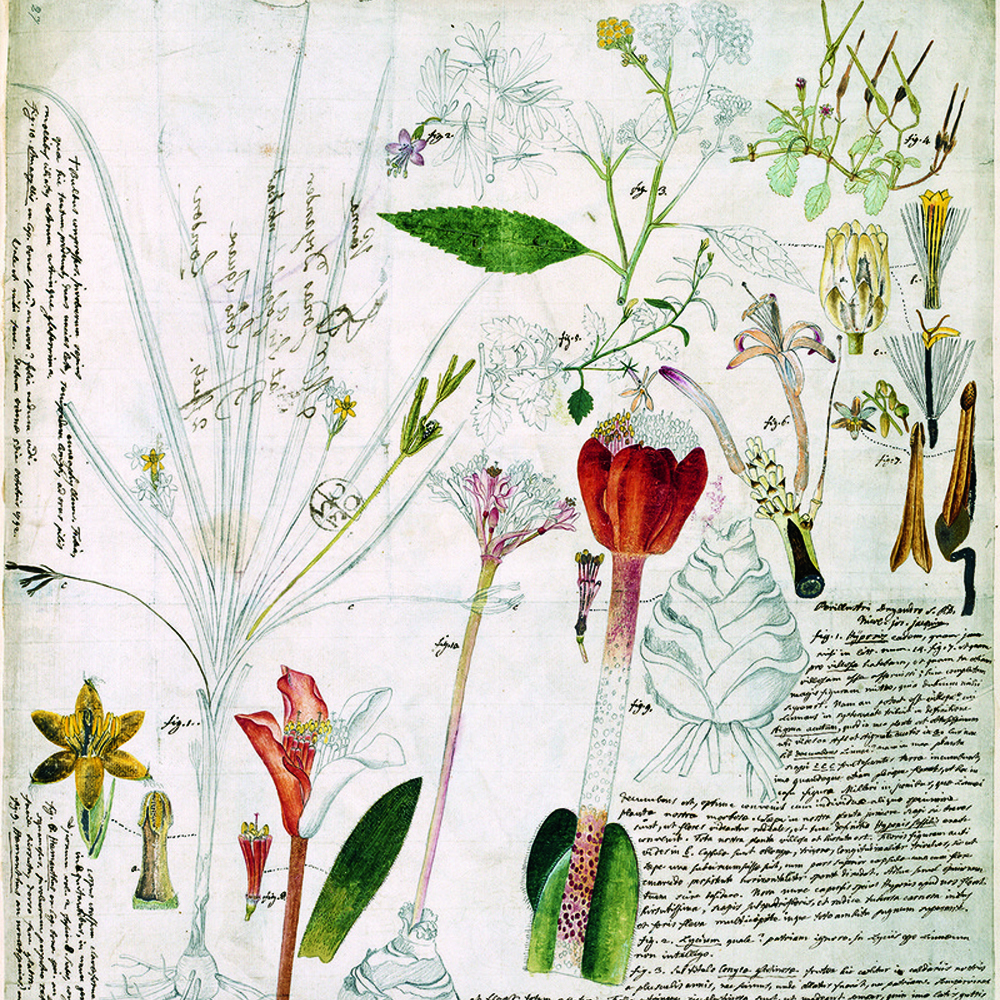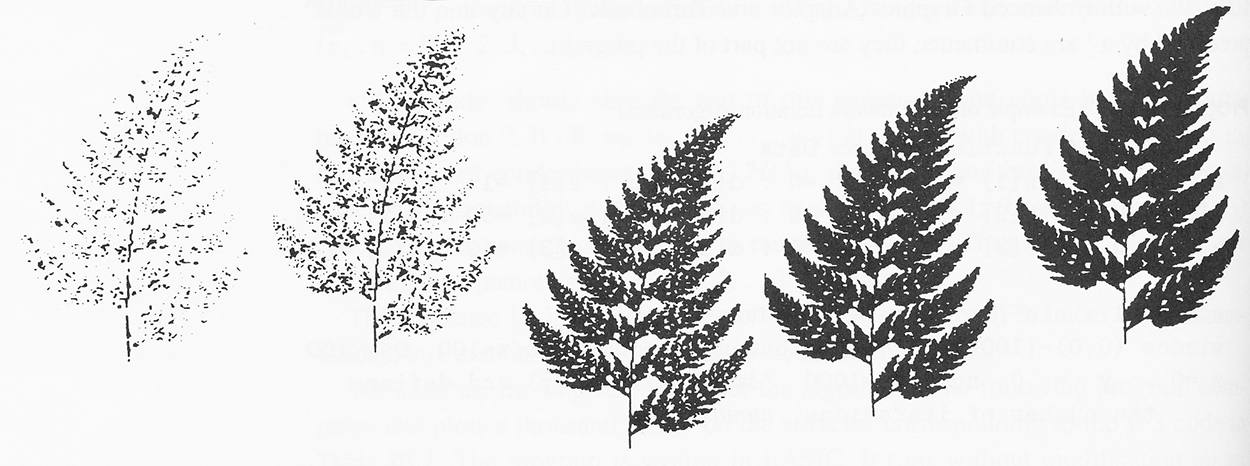
미분음 조율된 두 대의 피아노를 위한, "괴테의 정원"
I. Die Urpflanze - the Primordial Tree
II. Steigerung - Intensification
III. a Pentaprismic Caterpillar
IV. Polaritat - the Polarity of Arborescence
V. gleichsam auf einer geistigen Leiter - as on a spiritual ladder
V. gleichsam auf einer geistigen Leiter - as on a spiritual ladder
Hanah Choi and Hanqian Zhu, piano
18th Annual 21st Century Piano Competition Concert, February 10, 2017, 7:30 pm
Foellinger Great Hall, Krannert Center for the Performing Arts
Music with score, ScoreFollower 2018 from the fall 2018 follow my score call for works
On Goethe's Garden: 36 min. video presentation on Goethe's Garden, May 2021
“Structural Foundation of Musical Materials in my Goethe’s Garden: The graphical representation of infinitely recursive fractal tree figures and It’s projection onto the sonic pane”
Awards:
Commissioned by the 21st Century Piano Commission Award, 2017
Duration: ca. 36 minutes
Program notes
Goethe’s Garden is based on the tree figure or pattern (Xenakis calls it arborescence), both metaphorically and structurally. This idea of the world tree, a tree as a root or the original source of universal energy, appears in numerous mythologies and religions throughout the world. Examples include the Tree of Life in the Garden of Eden, Yggdrasil in Norse mythology, the Bodhi tree of Buddhism, the Seonangdang(성황당) of Korean shamanism, and so on.
It is no coincidence that I found Goethe’s writing about trees, The Metamorphosis of Plants (Die Metamorphose der Pflanzen), while reading Webern’s book, The Path to the New Music. Here Webern introduces the idea of the tree to evoke the concept of musical unity. Although the image of the World Tree per se doesn’t appear in Goethe’s book, he does indeed mention the idea of a primordial tree in a series of letters to Charlotte von Stein. It is a metaphysical prototype-tree, in which all the essence of trees is immanent, which he calls “Die Urpflanze.”
In my piece I have rendered the image of this primordial tree as the overtone series: not as a simple ascending integer series, but rather as a 2nd dimensional tree-type data structure: each of its inner nodes has its own overtone sub-branches (this idea of using tree type data structure emerged while I was reading an interview with the composer Philippe Leroux, in which he explained the idea but didn’t actually realize it in his compositions, and Ben Johnston’s writings as well).
This structural foundation of musical materials led me to try to portray trees “graphically” as well. The visual representation of sonic entities (or vice versa) has a long history, from the Geiger counter (developed in 1928), to Debussy’s geotropic signature melodic contours and musical paintings of clouds (Nuages) and the sea (La Mer), to Takemitsu’s gardenic geological orchestrations (Arc) or his more intimate composition, Rain Tree Sketch. Other examples include Xenakis’s arborescent figures in many of his works, including Evryali, along with the digital waveforms of Grisey’s Vortex Temporum, or recently the sonic alphabets of Leroux’s Vox Rei, and acoustical genes of Stephen Taylor’s Writhe series.
To render the infinite variations of tree forms and physiognomies, I adopted Barnsley’s Fern model, which uses a transformation matrix with probability variables, in a mathematical formula of self-similarity: Iterated Function System (IFS.)

Michael F. Barnsley, Fractals Everywhere, new edition ed. (New York: Dover Publications, 2012), 90.
What the audience will actually hear is possible with two pianos, each tuned a quarter-tone apart: an infinite, quasi-overtone series, with thousands of variations and ramifications with different interval orders, rigorously coherent because of a limited number of core, just intervals. Certainly this idea has a strong connection with Lutoslawski’s harmonic language. While he uses only limited intervallic content, he is able to create a myriad of harmonic tableaux in 12-tone harmonic fields by rearranging his intervals in different registers and timbres. Here I have developed these intervals by combining a recursive fractal algorithm with just intonation. The result, I hope, is a palette of diverse harmonic and timbral colors with idiosyncratic intervallic characters, created by repeating, ever-changing probability transformation operations. The harmonies, with their microtonal deviations or distortions, are engendered by just intervals of prime number ratios. But just like a tree in the forest, Goethe’s Garden is a single, unified entity: every tree is an overtone simulacrum (self-similarity), with randomness and variability, of the ur-Pflanze.

Tree figure 57 – source material for the 2nd movement
left leaf ratio = just perfect 4th (4/3); right leaf ratio = septimal minor 3rd (7/6)
fundamental frequency = 28.5851 (A-half sharp - 7th ovt of C)

Tree figure 64 – source material for the fourth movement
left leaf ratio = 1.2083 (29/24): 28 cents lowered eq-temp minor 3rd; right leaf ratio = 1.4375 (23/16): 28 cents raised eq-temp tritone (a happy coincidental symmetry)
fundamental frequency progression: F-quarter flat - E-flat - D-quarter-flat - (C) - B-quarter-flat - A
Notes on tonight’s program (from the original concert program, the 18th Annual 21st Century Piano Competition Concert, Krannert Center for the Performing Arts in Urbana, February 2017)
One of our musicology professors says that a good paper demonstrates directions for future research: or in other words, a possibility for different paths to a topic. I think this is what I have tried to do for tonight’s concert.
We humans, artists, aspire to see something beyond, or unknown. Plato described this as shadows of the cave. In mythology this was symbolized as death or night (Tenebrae), and during medieval period, it was alleged to be evil. As an order or system arises, there also arises chaos or disorder as a counter-force, a complementary set. We are designed to see only what we are used to; for example we understand something mostly defined by our languages, as Lacan pointed out.
But we struggle to enlarge our visions: to see or at least to grope towards something which we have not yet recognized or perceived with our current faculties. Something in-between, something unknown, something which is out of our “system,” or something even recognized as ugly in current society.
Mathematicians use equations to search for the beyond. They use “transformation” formulae to solve specific equations which cannot be solved in their original domain (for example, the Laplace transform in differential equations). They try to see something in a different perspective, guiding them to a (literally) new dimensional thinking, enabling them to see objects previously invisible. This new sight is not a creation, but a discovery. The answer has been with us, in our own dimension, but either hidden, overlooked or ignored. The value of truth reveals itself only when properly illuminated.
For this concert, I tried to posit one question about beauty. I hope this trial of “asking,” similar to transformation formulae in mathematics, experiments in physics, or Buddhist zen questions, can give us room to think about us—about music, our society, our earth, and beauty, either transcendental or ephemeral.
This society is in danger, this earth is in danger, and this species is in danger. We need to see and think differently, and we have to do this during our lifetime. All artists need to be in danger whenever they try to create something. They need to see something without them in it, by killing (removing) themselves. Tarkovsky wrote: “True artistic inspiration is always a torment for the artist, almost to the point of endangering one’s life… The artist seeks to destroy the stability by which society lives, for the sake of drawing closer to the ideal. Society seeks stability, the artist—infinity” (Sculpting in Time, 1986). We are incomplete beings, and this awareness of weakness and ignorance of ourselves makes us stronger. But ignorance of our ignorance will destroy us in the end.
Thankfully, this society has good people who are aware of our incompleteness. I deeply appreciate Richard Anderson and Jana Mason, the donors who made the 21st Century Piano Competition Concert possible. I also appreciate Han-ah Choi and Hanqian Zhu, two great pianists who spent endless hours to learn and speak through these pieces; and I truly appreciate my teachers and the composition faculty of the University of Illinois who generously supported and encouraged me to keep composing. I appreciate my wife Hyelin and my dearest daughter Jera, who everyday give me a new transformation formula to see the world differently. And most of all, I thank you all who came here to attend this concert and listen to this unfamiliar and “unstable” music. Thank you.
